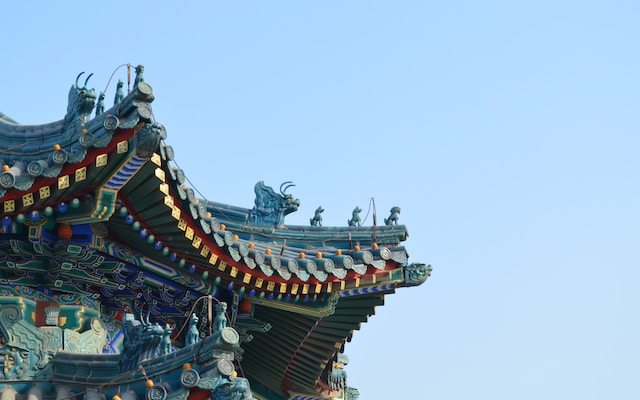
According to our study based on CJO’s Annual Reports, for the recognition or enforcement of foreign arbitral awards in China, the average length of proceedings is 596 days, the court costs are no more than 1.35% of the amount in controversy or 500 CNY, and the attorney’s fees are, on average, 7.6% of the amount in controversy.
The basis for the data is as follows:
I. Time: 596 days
The length of proceedings for recognition and enforcement of a foreign arbitral award can be divided into two stages: (1) recognition, and (2) enforcement.
1. Recognition: 356 days
We have collected the Chinese court rulings on the recognition of foreign arbitral awards rendered in 2019 and 2020 that recorded the dates of accepting the case and of the ruling, by which we calculated the time for Chinese courts to deal with such cases and render rulings.
To be specific, we have found the above two dates in 42 rulings. The average time for recognition is 356 days, with a maximum of 1727 days and a minimum of 41 days.
2. Enforcement: 240 days
It is hard to know the period of enforcement in a specific case from publicly available sources.
However, after being recognized, the enforcement of foreign arbitral awards is not different from that of Chinese judgments. Therefore, we could make reliable estimates based on the average data concerning the enforcement of Chinese judgments, which are available from publicly available sources.
To this end, we use the data from the Doing Business 2020 of the World Bank, which indicates that it takes 240 days for a Chinese court to enforce a judgment.
II. Costs
1. Court costs: no more than 1.35% of the amount in controversy or 500 CNY
We have discovered the description of court costs in the rulings of 41 cases. The average court costs of the 24 cases are 15,736.41 CNY. However, the average may not truly indicate the amount of real court costs, because we can see two different standards used in these cases:
(1) There are 34 cases with court costs no more than 500 CNY, 30 of which incurred 400 CNY or 500 CNY in court cost. These cases seem to be charged per case, and the amount of court costs has nothing to do with the amount in controversy. As regard to the rulings rendered to grant the motion to withdraw, the courts charged 50% of the pre-charged costs.
The amount of court costs of these 34 cases are close to the pre-charge standard for recognition and enforcement of foreign arbitral awards (500 CNY) adopted by the Supreme People’s Court (“SPC”).[1] Therefore, we estimate that most courts refer to this standard to determine the court costs for foreign arbitral awards recognition and enforcement cases.
(2) There are 7 cases with court costs above 10,000 CNY, which were 39,037.42 CNY, 98,738.79 CNY, 15,305.11 CNY, 352,504.32 CNY, 24,247 CNY, 60925 CNY, and 39485.2 CNY respectively. In these cases, the court costs seem to be calculated based on the amount of controversy, and they highly increase the average court costs of all cases.
Pursuant to 2006 Measures for the Payment of Court Costs,[2] for cases enforcing foreign arbitral awards, the calculation of court costs is a progressive fee system based on the amount of controversy. Generally speaking, the court cost is around 1.35% for a case of 10,000 USD, 1.37% for a case of 100,000 USD, 1.07% for a case of 500,000 USD, 0.92% for a case of 1 million USD, and 0.62% for a case of 2 million USD. In other words, court costs account for up to 1.35% of the subject matter of litigation.
The above two charging standards indicate that on one hand, in most Chinese courts, the court costs for cases of recognition and enforcement of foreign arbitral awards are quite low; on the other hand, however, since the SPC has not yet clarified the charging standards for such cases, some courts may charge fees based on the amount in controversy and thus lifting the average court costs.
In summary, we may conclude at this moment that the court cost is within 1.35% of the amount in controversy or 500 CNY.
2. Attorney’s Fees: 7.6% of the amount in controversy
Usually, the attorney’s fees are not disclosed, so it is difficult for us to obtain data from publicly available sources. Generally speaking, for most civil cases in China, lawyers do not charge an hourly rate. Instead, they charge a fixed fee or a certain percentage of the winning amount.
By referring to the Doing Business 2020 of the World Bank, Chinese lawyers averagely charge 7.6% of the claim value.
Alternatively, we may estimate in another way. Before 2018, the Chinese government set government-guided prices for attorney fees. Although the government no longer restricts how lawyers charge, in practice, Chinese lawyers’ fees are basically not far from the said guide prices.
According to the latest charging standard issued in 2016 by Beijing Municipal government, for each stage of the litigation, Chinese lawyers can determine the contingent fees in proportion to the claim value, and the calculation method is also progressive.
According to the progressive formula of the Beijing government:
(1) For a case with the claim value of 1 million USD, calculated at an exchange rate of 6.5, the court cost for each stage is 44,000 USD, and the total legal fees of the two stages account for 8.8%;
(2) For a case with the claim value of 2 million USD, calculated at an exchange rate of 6.5, the court cost for each stage is 74,000 USD, and the total legal fees of the two stages account for 7.4%.
This standard is close to the statistics of the World Bank. Therefore, the attorney’s fees may be considered as 7.6% of the claim value, based on the data of the World Bank.
References:
[1] 最高人民法院关于承认和执行外国仲裁裁决收费及审查期限问题的规定(法释〔1998〕28号)。
[2] 《诉讼费用交纳办法》(中华人民共和国国务院令第481号)。
Contributors: Meng Yu 余萌 , Ruida Chen 陈锐达









